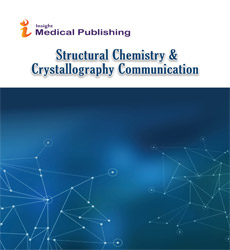Abstract
Synthesis of graphene-Fe magnetic nanofluid for enhancement of water thermal conductivity
In recent years, using nanofluids to increase the heat transfer is gaining much more attention among engineers and researchers. Nanofluids are comprised of a concentration of nanoscale sized particles dispersed in a base fluid. Nanoparticles examples include pure metals, oxides, carbides, and carbon nanotubes. The base fluid can be any material from pure water, ionic liquids, oils, to diluted organic compounds such as ethylene glycol and oleic acid. Magnetic nanofluids also called as ferrofluids, consist of colloidal mixtures of super paramagnetic nanoparticles suspended in a nonmagnetic carrier fluid, constitute a special class of nanofluids exhibiting both magnetic and fluid properties .In these suspensions, also known as smart or functional fluids all features such as fluid flow, particles movement and heat transfer process can be controlled by applying exterinal magnetic fields.In the present work, we proposed to synthesize water base nanofluids consisting of magnetic Graphene-Fe (MGF) nanocomposite and to study the fluid thermal conductivity in presence and in absence of magnetic field.Graphene was prepared by exfoliation method and grapheme-Fe nanocomposite was prepared by coprecipitation of Fe2O3 (over graphene) from aqueous salt solution Fe (II) and Fe (III) in alkaline medium.Synthesis of nanofluid has been done by well dispersed of MGF in a certain fluid. The results obtained showed that, the disperssion of these nanoparticles in fluid as a magnetic nanoparticle increased the efficiency of nanofluid(when graphene is used alone) and a significant improvment in thermal conductivity has been obtained by addition Fe3O4 to graphene sheets. When the magnetic field is applied, the magnetic dipole moments of the particles align and the particles came in contact with each other and form chains in the direction of the applied magnetic field. When parallel to the direction of heat flow, the magnetic field causes the effective thermal conductivity in the direction of the magnetic field to increased. Characterization techniques like X-ray diffraction (XRD), Scanning electron microscope (SEM),FTIR and Raman shift spectroscopy were used to investigate the morphology and structure of synthesized nanoparticles, while thermal conductivity of nanofluid at different conditions is measured by thermal conductivity meters and temperature thermocouples readings.
Author(s): Mohammed Ibrahim
Abstract | Full-Text | PDF
Share this

Google scholar citation report
Citations : 275
Abstracted/Indexed in
- Google Scholar
- China National Knowledge Infrastructure (CNKI)
- Directory of Research Journal Indexing (DRJI)
- WorldCat
- Geneva Foundation for Medical Education and Research
- Secret Search Engine Labs
- CAS (Chemical Abstracting Services)
Open Access Journals
- Aquaculture & Veterinary Science
- Chemistry & Chemical Sciences
- Clinical Sciences
- Engineering
- General Science
- Genetics & Molecular Biology
- Health Care & Nursing
- Immunology & Microbiology
- Materials Science
- Mathematics & Physics
- Medical Sciences
- Neurology & Psychiatry
- Oncology & Cancer Science
- Pharmaceutical Sciences

